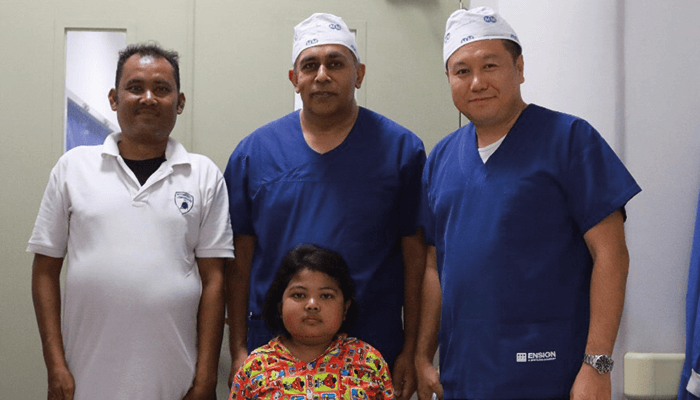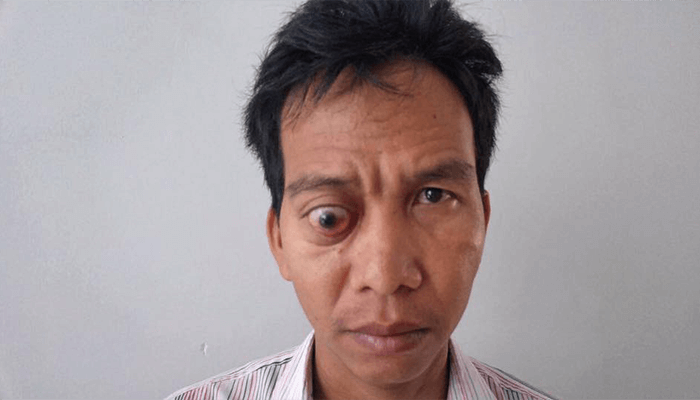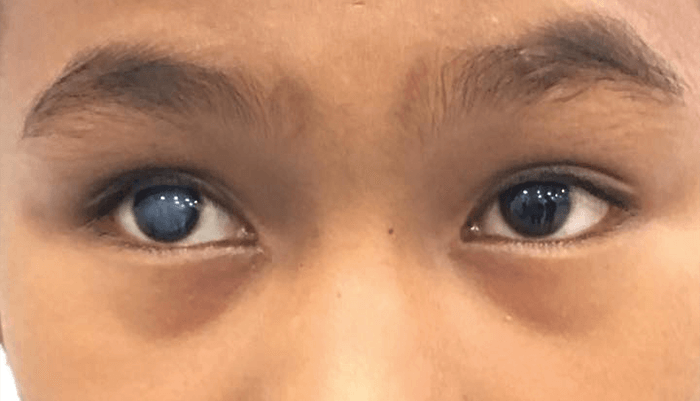
- Cambodia has a small population of 15 million, but there are only 32 ophthalmologists – and only 23 who are surgically trained
- The incidence of blindness is high and on the increase, despite 90 percent of all cases being preventable
- The Khmer Sight Foundation (KSF) was initiated to bring eyecare to Cambodians who need it most
- Here, we share the story of the first mission, and look to the future of KSF – and preserving the sight of the Cambodian population.
Cambodia is a country of 15 million people with a pre-history dating back to 6000 BC. In the 12th century, Cambodia had the largest empire in Southeast Asia, with its seat at the world-famous city of Angkor. However, it faced tragedy in recent times; from 1975 until 1979, mass genocide by the Khmer Rouge regime resulted in the death of around a quarter of the population. The government arrested, tortured and executed supposed enemies of the regime, specifically professionals and intellectuals. In practice, this included anyone with an education, foreign language skills and even people who required glasses – the regime inferred that these people spent too much time reading. Despite the Khmer Rouge’s official dissolution in the 1990s, the lasting impact is evident throughout the country. There are only 32 ophthalmologists – 23 with surgical training – to serve the whole population, making it one of the most underserved countries in the world. As a result, there are 180,000 completely blind Cambodians, a figure that rises by 10,000 each year despite 90 percent of cases being either treatable or preventable. Cataract – a highly treatable condition in the West – is the single leading cause of blindness, with a current backlog of approximately 300,000 Cambodians who require cataract operations. Other leading causes of blindness include pterygium, corneal scarring and glaucoma.
The Khmer Sight Foundation (KSF) is a not-for-profit organization that was set-up in 2015 by the late Kim Frumar, an Australian ophthalmologist, and Sean Ngu, the Secretary of State for Cambodia. The intention? To provide and develop sustainable eyecare services for the people of Cambodia. KSF has a two-pronged approach to tackling this issue. First, it runs weeklong missions at a central facility in Phnom Penh, performing free cataract and pterygium operations. Second, it trains local Cambodian ophthalmologists through theater sessions, labs and lectures. For the next year, KSF has a specific agenda – to undertake 18 weeks of charitable ophthalmic missions with the help of 120 internationally recruited surgeons from the UK, Germany, Italy, Austria, Singapore and India. The first mission ran for seven days in April 2017. Here, we share the story…
Mission logistics
The first mission was delivered at the Preah Ang Duong hospital in Phnom Penh, and involved a team of 11 healthcare professionals from the UK (consultants, fellows, senior ophthalmology trainees, an anesthetist, a senior optometrist and junior doctors). The first day was spent setting up the facility with the required equipment; through generous donations from a number of ophthalmic companies, four phacoemulsification machines, 2,500 IOLs, 500 viscoelastics, medications and a whole host of other equipment were flown to Phnom Penh.As 85 percent of the Cambodian population lives in rural provinces, KSF arranged a pre-mission screening program, which saw local medical student volunteers traveling to different provinces to identify patients with eye disease. The medical student volunteers spoke fluent Khmer and English and were vital to the successful running of the mission. Each day of the mission, these patients were collected from their rural province by coach (a different province each day) and brought to the Preah Ang Duong hospital; the journeys were often long and patients had often set out far in advance before reaching the community bus stop. On arrival at the hospital, information on medical history and visual acuity measurements were collected before the patients were assessed clinically through slit lamp examination. If indicated, the patient was offered same day surgery – a big decision to make in the space of minutes. If patients had a condition that the team did not have the facility to treat, they were either told to return to a certain mission where the team would consist of that specialty or referred to local specialist services. Once the patients from the provinces had been assessed, the clinic opened up to the local citizens of Phnom Penh. Patients who earned less than $100 USD per month were entitled to free treatment.
Those patients identified for theater were consented, and biometry and/or further imaging was obtained, if required. In the theater, scrub nurses from the hospital and further volunteers assisted, while local Cambodian ophthalmology trainees observed. As many patients presented with mature cataracts, senior surgeons performed the majority of operations. Surgeons had access to a full range of foldable, PMMA and anterior chamber lenses, as well as iris hooks, tension rings and vision blue. Small incision cataract surgery (SICS) – a small-incision form of extracapsular cataract extraction – was employed for certain patients. The procedure is particularly useful in resource-poor settings because it results in a self-sealing, sutureless wound. In pterygium procedures, autologous blood was employed as a sealant for the conjunctival autografts, which was again advantageous as sutures or fibrin sealants were not required. Postoperatively, the patients from the provinces slept in the hospital overnight before receiving a one-day postoperative check-in clinic. Patients were also followed up 4–6 weeks after surgery. Throughout the week, senior ophthalmology trainees delivered lectures and a dry lab, which was well received by Cambodian trainees.
In total, over 400 patients were seen in clinic and 200 patients received operations. The immense gratitude from those seen both in the clinic and post-operatively was unforgettable; as the team left the hospital at the end of each day, the theater doors opened to a sea of smiling, eye-patched patients affectionately waving goodbye. In practice, the theater did not run at full capacity during this first mission – of six operating tables only four were used – but it is hoped that more surgeries could be performed in future missions.
Unforgettable clinical cases
As well as the unforgettable memories of gratitude, we also encountered several unusual – and unforgettable – cases during this mission. For example, a three-month-old baby was brought to the hospital with her mother, who was concerned because the child had not been opening their eyes. Unbeknownst to the mother, the child had been born with bilateral anophthalmia, so the team had to explain that the child would never see. Sadly, there have been cases of infanticide in Cambodia related to congenital defects, so arrangements were put in place for the police to visit the family on a regular basis to ensure the child’s safety. There were also a few cases where patients had severe pathology but could not be treated because management was outside the teams remit. One such case was a young woman who presented with bilateral cataracts, diastolic blood pressure of 150 mmHg and Cushingoid features (Figure 1). It was surmised that she might be suffering from congenital adrenal hyperplasia, and she was referred to local services. One gentleman presented with unilateral exophthalmos secondary to a brain tumor (Figure 2); presumably he was unable to afford treatment. Another gentleman was brought to the hospital with pathology highly suspicious of thyroid eye disease. KSF has managed to refer these patients to local services for treatment.
In some cases, the proposed outcome was unattainable; for example, an 11-year old girl was identified in the provinces with a unilateral cataract. During cataract extraction, a Toxocara scar and tractional retinal detachment were discovered (Figure 3). The team explained to the patient and her family that her sight would always remain poor despite intervention – they were extremely grateful to the team despite the bad news.

The future of Cambodian eyecare
The first mission was a success. But what does the future hold? The Cambodian government has recently increased the number of ophthalmology postgraduate training posts, and KSF, in conjunction with the government, is currently developing an ophthalmic ‘super-center’ in Phnom Penh. This complex, the first of its kind in Cambodia, will consist of a school of optometry and act as the center for postgraduate ophthalmology training, as well as the location of future KSF missions. KSF is also working to develop international fellowship opportunities for Cambodian ophthalmologists. One day, we hope that the country can become self-reliant in the provision of high quality, safe and effective eyecare. Priyanka Mandal and Swetha Rambhatla are trainee ophthalmologists and KSF volunteers. Sunil Shah is a consultant ophthalmologist at the Birmingham and Midland Eye Centre, Birmingham, UK, and International Medical Chair of KSF. The authors would like to acknowledge and thank the following for their hard work and dedication in making this mission a success: Sean Ngu, Teresa De Leon, Sunil Shah, Leon Au, Rao Rambhatla, Dong Park, Siddharth Subramani, Shi Zhuan Tan, Kenneth Yau, Andrew Walkden, Patrick Gunn, Priyanka Mandal and Swetha Rambhatla.For more information about KSF please visit www.khmersight.com. KSF plans to continue running missions and relies on the help of volunteers. If you would like to volunteer please email founder@khmersight.com. For surgical volunteers, please email sunil.shah@khmersight.com.
